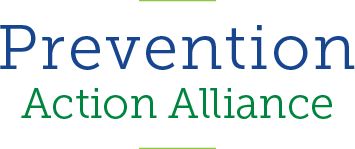
Substance use disorder, is a chronic, complex brain disease that affects about 21 million, or 1 in 7, Americans, according to the U.S. Surgeon General’s report Facing Addiction in America. Addiction compels people to seek out drugs despite any negative consequences that might be incurred. As a disease, it hijacks the brain to create an intense craving for the addictive drug or behavior. That craving can override other thoughts and needs in the brain, including desires to care for an infant, build and maintain healthy relationships, work, have fun, take care of oneself, and protect oneself from harmful situations. It changes how you think and how you behave.
According to the National Institute on Drug Abuse (NIDA), people may start taking drugs because it gets them high, to escape stress in their lives, as a performance enhancer, out of curiosity, or as a result of peer pressure. While people may choose to use drugs, they do not choose to become addicted. Addiction is a disease; it is not a moral weakness or failure but rather a change in how the brain works.
Symptoms of Addiction
Like any other disease, addiction does have observable symptoms. According to the American Psychiatric Association, there are four categories of symptoms of addiction. If you notice any of these symptoms and want to get help, contact the Substance Abuse and Mental Health Services Administration’s National Helpline at 1-800-662-4357.
- Impaired control: a craving to use the substance; desire or inability to reduce or control substance use.
- Social problems: failure to complete major tasks at work, school, or home; social, work, or leisure activities are given up or cut back because of substance use.
- Risky use: the substance is used in risky settings; use continues despite known problems.
- Drug effects: tolerance (need for larger amounts to get the same effect); withdrawal symptoms (different for each substance).
Risk and Protective Factors of Addiction
Have you ever wondered why some people can use drugs without getting addicted? While everyone is susceptible to addiction, some people have risk factors that predispose them to addiction while others have protective factors that reduce their risk.
According to NIDA, risk and protective factors include:
| Risk Factors | Protective Factors |
|---|---|
| Aggressive behavior in childhood | Good self-control |
| Lack of parental supervision | Parental monitoring and support |
| Drug experimentation | Positive relationships |
| Availability of drugs at school | Anti-drug policies at school |
| Community poverty | Neighborhood resources |
Stigma is a Silent Killer
Overcoming the stigma surrounding drug addiction is critical to expanding treatment and prevention services. About 53 percent of Americans see addiction as the disease that it is, according to a survey conducted by The Associated Press-NORC Center for Public Affairs Research. However, that same survey found that people continue to see addiction as a moral failing.
Stigma stops people from getting the help they need. It’s a barrier to patients in need of treatment. Until we begin to treat addiction with the same compassion and sincerity that we treat heart disease, people will continue to defer seeking treatment out of shame.
We can begin de-stigmatizing addiction by changing the words we use to describe it. Our free Words Matter digital resources were created with help from those who have an addiction and Ohio’s Language First team. We encourage you to take advantage of these resources as they can help you use and role model de-stigmatized language.
Addiction is Preventable
According to NIDA, preventing drug misuse and addiction during adolescence is the best strategy for tackling addiction. Addiction changes the brain, and the developing teen’s brain is especially vulnerable to disruptions. Teens who use alcohol, tobacco, and other drugs often have family and social problems, perform poorly in school, and have health problems (including mental health issues).
Teenagers are primed to consider experimenting with drugs. They’re often in times of transition—moving, changing schools, new social and academic situations—and they’re often exposed for the first time to alcohol, nicotine, other drugs, and the use of these drugs at parties.
According to NIDA, research-based prevention programs have been proven to promote protective factors and to mitigate risk factors. Studies have shown that they significantly reduce the early use of tobacco, alcohol, and other drugs.
If you’re concerned about you or someone else, get help at findtreatment.gov.
